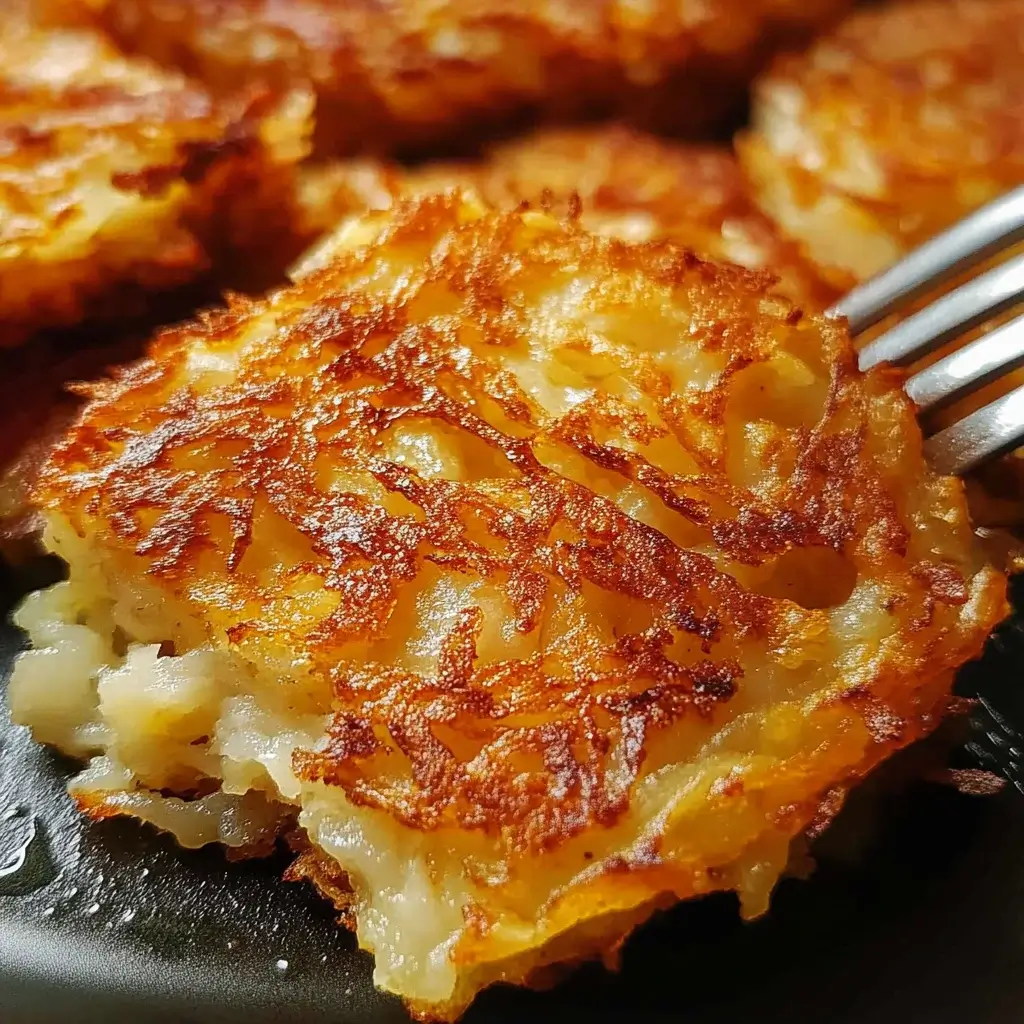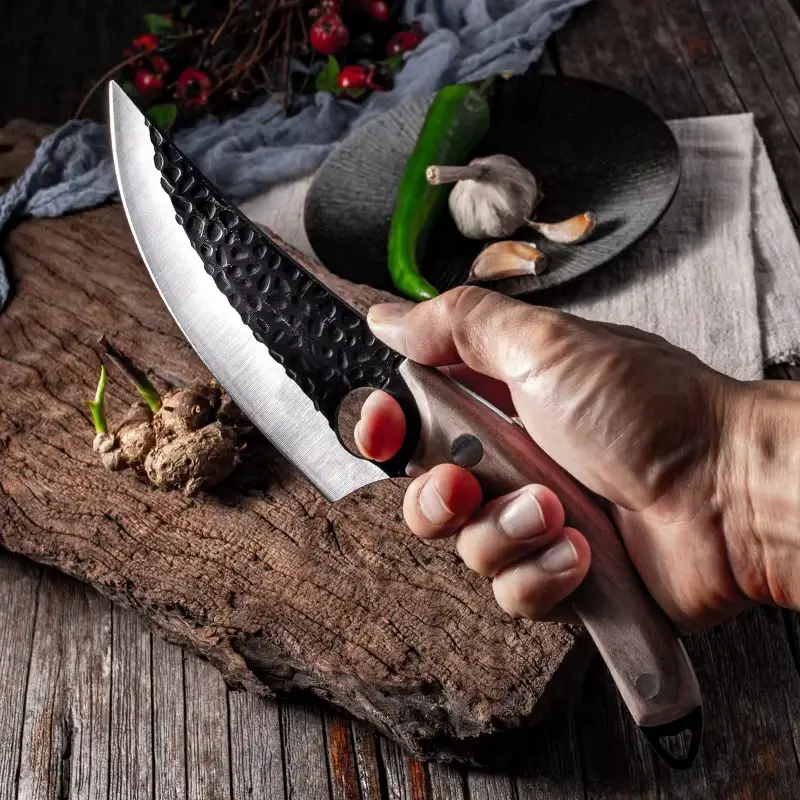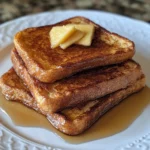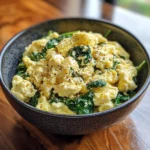There’s something undeniably comforting about a plate of perfectly crispy golden hash browns. In my family, weekend breakfasts are a sacred ritual, and for years, achieving that restaurant-quality crispiness at home felt like an elusive dream. We’ve tried countless recipes, battling soggy middles and uneven browning. Then, we stumbled upon this method, and everything changed. These hash browns aren’t just good; they’re transformative. The exterior shatters with a delightful crunch, giving way to a fluffy, tender interior bursting with potato flavor. They’ve become a staple, requested every single weekend, and honestly, I can’t imagine breakfast without them now. Whether you’re a seasoned cook or a kitchen novice, this guide will equip you with all the secrets to making hash browns that are truly, undeniably, golden and crispy every single time.
Ingredients
The beauty of hash browns lies in their simplicity. You don’t need a pantry full of exotic ingredients to achieve breakfast perfection. However, the quality and type of each ingredient play a crucial role in the final texture and flavor. Let’s break down each component to ensure your pantry is prepped for hash brown success:
- Potatoes: This is the star of the show, and choosing the right potato is paramount. For crispy hash browns, you want potatoes that are high in starch and low in moisture. This combination allows them to crisp up beautifully without becoming mushy.
- Russet Potatoes: These are your best bet. Russets, also known as Idaho potatoes, are the classic choice for hash browns for a reason. They are high in starch, low in moisture, and have a slightly drier texture. This makes them ideal for shredding and achieving that coveted crispness. Their mild flavor also allows them to take on seasonings and complements other breakfast components perfectly.
- Yukon Gold Potatoes: While not as starchy as Russets, Yukon Golds are a decent second choice. They have a buttery flavor and a slightly waxy texture. If using Yukon Golds, you might need to be extra diligent in removing excess moisture to ensure they crisp up properly. They will result in a slightly denser hash brown but still delicious.
- Avoid Waxy Potatoes: Red potatoes, new potatoes, and fingerling potatoes are generally too waxy and high in moisture for crispy hash browns. They tend to steam rather than crisp when cooked in this manner, resulting in soggy, less desirable results.
- Fat for Cooking: The type of fat you use significantly impacts the flavor and crispiness of your hash browns. You have several excellent options:
- Clarified Butter (Ghee): Clarified butter is butter with the milk solids and water removed. This raises its smoke point, making it ideal for high-heat cooking like hash browns. It imparts a rich, nutty flavor and promotes excellent browning. Ghee is a fantastic option for those who want a buttery flavor without the risk of burning.
- Vegetable Oil or Canola Oil: These neutral oils have a high smoke point and are readily available. They won’t add much flavor to the hash browns, allowing the potato flavor to shine through. Vegetable or canola oil are great budget-friendly choices for crispy results.
- Avocado Oil: Another excellent high-smoke-point oil with a mild, slightly nutty flavor. Avocado oil is a healthy and versatile option that works wonderfully for hash browns.
- Rendered Bacon Fat or Duck Fat: For a truly decadent and flavorful hash brown experience, consider using rendered bacon fat or duck fat. These fats impart a rich, savory flavor that elevates the hash browns to another level. Use these sparingly or in combination with a neutral oil, as they can be quite rich.
- Butter (Unclarified): While butter adds fantastic flavor, it has a lower smoke point and can burn easily at the high temperatures needed for crispy hash browns. If using butter, consider using it in combination with a high-smoke-point oil (like half butter, half vegetable oil) to get the flavor of butter and the crisping power of oil.
- Salt: Essential for seasoning and drawing out moisture from the potatoes. Use kosher salt or sea salt for the best flavor. Salt not only enhances the taste but also helps in the crisping process by extracting excess water.
- Black Pepper: Freshly ground black pepper adds a touch of warmth and spice. Adjust the amount to your preference.
- Optional Seasonings (To Taste): While salt and pepper are classic and sufficient, you can customize your hash browns with additional seasonings to create different flavor profiles.
- Onion Powder or Garlic Powder: A pinch of onion or garlic powder adds depth and savory notes.
- Paprika (Smoked or Sweet): Paprika adds color and a subtle smoky or sweet flavor.
- Cayenne Pepper or Red Pepper Flakes: For a touch of heat, add a pinch of cayenne pepper or red pepper flakes.
- Dried Herbs (Rosemary, Thyme, Parsley): Dried herbs can add an aromatic dimension to your hash browns. Rosemary and thyme pair particularly well with potatoes.
- Fresh Herbs (Chives, Parsley, Dill): Fresh herbs are best added after cooking to retain their bright flavor and color.
Instructions
Making crispy golden hash browns is a straightforward process, but attention to detail is key. Each step is designed to maximize crispiness and flavor. Follow these instructions carefully for hash brown perfection:
- Prepare the Potatoes: This is the most crucial step. Proper potato preparation is the foundation for crispy hash browns.
- Wash and Peel (Optional): Thoroughly wash your potatoes under cold running water to remove any dirt. You can choose to peel the potatoes or leave the skin on for a more rustic hash brown. If leaving the skin on, ensure the potatoes are scrubbed very clean. Peeling will result in a smoother texture, while leaving the skin on adds a bit more texture and fiber.
- Shred the Potatoes: The size and consistency of your shredded potatoes impact the final texture.
- Using a Box Grater: This is the most common method. Use the large holes of a box grater to shred the potatoes. Grate lengthwise for longer shreds, which can contribute to a slightly more delicate texture.
- Using a Food Processor with a Shredding Disk: This method is faster, especially if you are making a large batch. Be careful not to over-process, as this can make the potatoes mushy. Pulse in short bursts until shredded to your desired consistency.
- Uniformity Matters: Aim for relatively uniform shreds. This ensures even cooking and crisping.
- Remove Excess Moisture (The Secret to Crispiness): Potatoes are naturally high in moisture. Excess moisture is the enemy of crispy hash browns. This step is non-negotiable.
- Rinse the Shredded Potatoes: Place the shredded potatoes in a large bowl and cover them with cold water. Agitate them with your hands to release excess starch. Drain the starchy water and repeat this rinsing process 2-3 times, until the water runs mostly clear. Rinsing removes surface starch, which can contribute to stickiness and prevent crisping.
- Dry the Potatoes Thoroughly: This is the most important part. You want to remove as much moisture as possible.
- Method 1: Clean Kitchen Towel or Cheesecloth: Place the rinsed and drained potatoes in the center of a clean kitchen towel or several layers of cheesecloth. Gather the edges of the towel/cheesecloth and twist tightly to squeeze out as much water as possible. You will be surprised how much water comes out. Repeat this process with fresh towels if necessary until you can no longer squeeze out significant amounts of water.
- Method 2: Salad Spinner: For smaller batches, a salad spinner can be helpful in removing excess water. Spin the rinsed potatoes in the salad spinner to remove surface moisture. You may still need to pat them dry with paper towels afterwards.
- The Drier, the Crispier: The drier your shredded potatoes are before cooking, the crispier your hash browns will be. Don’t skip or rush this step.
- Season the Potatoes: Seasoning at this stage ensures that the flavor is distributed throughout the hash browns.
- In a Bowl: Place the thoroughly dried shredded potatoes in a large bowl.
- Add Salt and Pepper: Sprinkle generously with salt and freshly ground black pepper. Start with about 1 teaspoon of salt per pound of potatoes and adjust to taste. Don’t be shy with the salt; it’s crucial for flavor.
- Optional Seasonings (If Desired): Add any optional seasonings you are using (onion powder, garlic powder, paprika, herbs, etc.) at this point.
- Toss to Combine: Gently toss the potatoes with your hands to ensure the seasonings are evenly distributed.
- Heat the Fat in a Large Skillet: Use a large (10-12 inch) skillet, preferably cast iron or non-stick. A large surface area is important for even browning and crisping.
- Medium-High Heat: Heat your skillet over medium-high heat. You want the skillet to be hot enough to crisp the potatoes quickly but not so hot that they burn before cooking through.
- Add Fat: Add a generous amount of your chosen fat to the hot skillet. You need enough fat to coat the bottom of the skillet and prevent sticking, allowing the hash browns to fry and crisp rather than steam. For a 12-inch skillet, start with about 2-3 tablespoons of fat and add more if needed during cooking.
- Heat Until Shimmering: Heat the fat until it is shimmering and hot. A drop of water flicked into the hot fat should sizzle immediately.
- Cook the Hash Browns in Batches (If Necessary): Avoid overcrowding the skillet. Overcrowding will lower the temperature of the pan and cause the potatoes to steam rather than crisp.
- Single Layer: Spread the seasoned shredded potatoes in an even, thin layer in the hot skillet. You should hear a sizzle when the potatoes hit the hot fat.
- Don’t Overcrowd: If you have a large amount of potatoes, cook them in batches. It’s better to cook in batches and achieve crispiness than to overcrowd and get soggy hash browns.
- Press Down Gently (Optional): You can gently press down on the potatoes with a spatula to create a more compact and even patty. This is optional but can help achieve a more uniform shape.
- Cook Undisturbed for Crispiness: This is crucial for developing a golden-brown crust.
- Resist the Urge to Stir: Once the potatoes are in the skillet, resist the urge to stir them immediately. Allow them to cook undisturbed for several minutes on the first side. This allows them to develop a golden-brown, crispy crust.
- Monitor the Browning: Cook for about 5-7 minutes on the first side, or until the bottom is golden brown and crispy. Use a spatula to gently lift a corner to check for browning.
- Flip and Cook the Other Side: Once the first side is golden brown, carefully flip the hash browns.
- Use a Spatula: Use a wide spatula to flip the hash browns in sections. If you’ve pressed them into a patty, you can often flip them in larger pieces.
- Cook Until Golden Brown and Tender: Cook the second side for another 5-7 minutes, or until golden brown and crispy and the potatoes are cooked through and tender. You can test for doneness by piercing a hash brown with a fork; it should be easily pierced and tender.
- Remove and Drain: Once cooked to golden brown perfection, remove the hash browns from the skillet.
- Drain on Paper Towels: Place the cooked hash browns on a plate lined with paper towels to drain off any excess oil. This helps maintain their crispiness.
- Serve Immediately: Hash browns are best served immediately while they are hot and crispy.
- Garnish (Optional): Garnish with fresh herbs like chopped chives or parsley, if desired.
Nutrition Facts
(Approximate values, per serving. Nutritional content can vary based on potato type, fat used, and serving size.)
- Serving Size: Approximately 1 cup (about 150g)
- Calories: 200-250 kcal
- Fat: 10-15g
Note: These values are estimates. For more precise nutritional information, use a nutrition calculator and input the specific ingredients and amounts used in your recipe. Using more oil or different types of fat will significantly impact the fat and calorie content. Serving sizes can also vary greatly.
Preparation Time
- Prep Time: 20-25 minutes (includes washing, peeling, shredding, rinsing, and drying potatoes)
- Cook Time: 15-20 minutes (depending on batch size and skillet temperature)
- Total Time: 35-45 minutes
How to Serve Crispy Golden Hash Browns
Crispy golden hash browns are incredibly versatile and can be enjoyed in countless ways. Here are some delicious serving suggestions:
- Breakfast Staple:
- Classic Breakfast Plate: Serve alongside scrambled eggs, bacon or sausage, and toast for a complete and satisfying breakfast.
- Eggs Benedict Side: Replace English muffins with a bed of crispy hash browns for a unique Eggs Benedict twist.
- Breakfast Burrito Filling: Add hash browns to breakfast burritos with eggs, cheese, and your favorite fillings.
- Hash Brown and Egg Casserole: Layer hash browns in a casserole dish with eggs, cheese, vegetables, and bake for a hearty breakfast casserole.
- Savory Side Dish:
- Steak and Hash Browns: A classic pairing! Serve hash browns as a side to grilled steak or roast beef.
- Chicken and Hash Browns: Pair with roasted chicken, pan-fried chicken, or chicken schnitzel.
- Pork Chops and Hash Browns: A comforting and satisfying dinner combination.
- Fish and Hash Browns: Serve alongside pan-seared or baked fish for a hearty meal.
- Creative Toppings and Variations:
- Cheese Hash Browns: Sprinkle shredded cheddar, Monterey Jack, or pepper jack cheese over the hash browns during the last few minutes of cooking and let it melt.
- Loaded Hash Browns: Top with sour cream, chives, bacon bits, and cheese for a loaded potato experience.
- Spicy Hash Browns: Add diced jalapeños or a pinch of cayenne pepper to the potato mixture for a spicy kick.
- Herbed Hash Browns: Mix in fresh or dried herbs like rosemary, thyme, or parsley for added flavor complexity.
- Breakfast Hash Bowl: Create a breakfast bowl with hash browns as the base, topped with a fried egg, avocado, salsa, and black beans.
Additional Tips for Perfect Crispy Hash Browns
Achieving consistently crispy and golden hash browns is within everyone’s reach. Keep these tips in mind for hash brown success every time:
- Start with Cold Potatoes (Ideally): While not strictly necessary, using cold potatoes, especially Russets, can help reduce moisture content and make them easier to shred. Some chefs even recommend refrigerating shredded potatoes for a short period before cooking (after rinsing and drying). However, ensure they are thoroughly dried after refrigeration as condensation can form.
- Don’t Skimp on the Fat: Adequate fat is crucial for crispy hash browns. Don’t be afraid to use a generous amount of your chosen fat to coat the skillet and prevent sticking. The fat acts as a conductor of heat, helping to crisp the potatoes evenly. If the pan looks dry during cooking, add a little more fat.
- Control the Heat: Maintaining the right heat is essential. Medium-high heat is generally ideal. If the heat is too low, the potatoes will steam and become soggy. If the heat is too high, they might burn on the outside before cooking through. Adjust the heat as needed during cooking to maintain a steady sizzle and even browning.
- Don’t Overwork the Potatoes After Rinsing: Once you’ve rinsed and dried the potatoes, try to handle them gently. Excessive squeezing or manipulation can break down the potato shreds and make them mushier. Season them gently and spread them carefully in the skillet.
- Preheat the Skillet Properly: Ensure your skillet is fully preheated before adding the fat and potatoes. A hot skillet is essential for immediate sizzling and crisping. Allow the skillet to heat for a few minutes over medium-high heat before adding the fat. The fat should shimmer and be hot before you add the potatoes.
FAQ – Frequently Asked Questions about Crispy Hash Browns
Q1: Why are my hash browns soggy and not crispy?
A: Soggy hash browns are usually caused by excess moisture. The most common culprits are:
- Not Removing Enough Moisture: Insufficient rinsing and drying of the shredded potatoes. This is the number one reason for soggy hash browns. Make sure to rinse the potatoes thoroughly until the water runs clear and then dry them aggressively using a kitchen towel or cheesecloth to squeeze out as much water as possible.
- Overcrowding the Skillet: Cooking too many potatoes in the skillet at once lowers the temperature and causes steaming instead of frying. Cook in batches to avoid overcrowding.
- Cooking at Too Low Heat: If the heat is too low, the potatoes will steam in their own moisture instead of crisping up. Ensure your skillet is heated to medium-high and maintain that temperature throughout cooking.
Q2: Can I make hash browns ahead of time?
A: While hash browns are best served immediately for maximum crispiness, you can prepare the shredded potatoes ahead of time to save time in the morning.
- Shred and Store Potatoes: Shred the potatoes, rinse them thoroughly, and then store them submerged in cold water in the refrigerator for up to 24 hours. This will prevent them from browning. Before cooking, drain them thoroughly and again, dry them very well using the methods described in the instructions. Keep in mind that potatoes stored in water may lose some starch, potentially affecting the crispiness slightly, but it’s still a good time-saving technique.
- Cooked Hash Browns: Cooked hash browns will lose their crispiness as they sit. If you need to make them ahead, you can partially cook them until lightly golden but not fully crispy. Then, just before serving, reheat them in a hot skillet with a little more fat to crisp them up. However, freshly cooked hash browns are always the best.
Q3: What’s the best type of potato for hash browns?
A: Russet potatoes are generally considered the best for crispy hash browns due to their high starch and low moisture content. Yukon Gold potatoes are a decent second choice. Avoid waxy potatoes like red potatoes, new potatoes, or fingerling potatoes as they are too high in moisture and won’t crisp up well.
Q4: Can I use frozen shredded potatoes for hash browns?
A: Yes, you can use frozen shredded potatoes, but you need to thaw them and remove excess moisture.
- Thaw Completely: Thaw the frozen shredded potatoes completely according to package instructions.
- Remove Excess Moisture: Frozen potatoes contain a lot of moisture. Once thawed, squeeze out as much moisture as possible using a kitchen towel or cheesecloth. They might require even more thorough drying than fresh potatoes.
- Follow Recipe: Once thawed and dried, proceed with the recipe as instructed, starting from seasoning the potatoes. Frozen potatoes may not crisp up quite as perfectly as fresh potatoes, but they are a convenient option when you are short on time.
Q5: How do I keep hash browns warm and crispy if I’m making a large batch?
A: Keeping hash browns warm and crispy can be tricky, but here are a few tips:
- Oven Method (Short Term): Preheat your oven to a low temperature (around 200°F or 95°C). Place cooked hash browns on a wire rack set over a baking sheet (this allows air to circulate and prevents them from getting soggy from the bottom). Keep them in the oven for a short period (up to 15-20 minutes). Longer times will dry them out.
- Cook in Batches and Serve Immediately: The best way to ensure crispy hash browns is to cook them in batches and serve them immediately as they are cooked. This is preferable to trying to keep a large batch warm.
- Don’t Stack Them: Avoid stacking cooked hash browns on top of each other, as this traps steam and makes them soggy. Spread them out on a platter or wire rack if holding them briefly before serving.

Crispy Golden Hash Browns
Ingredients
The beauty of hash browns lies in their simplicity. You don’t need a pantry full of exotic ingredients to achieve breakfast perfection. However, the quality and type of each ingredient play a crucial role in the final texture and flavor. Let’s break down each component to ensure your pantry is prepped for hash brown success:
- Potatoes: This is the star of the show, and choosing the right potato is paramount. For crispy hash browns, you want potatoes that are high in starch and low in moisture. This combination allows them to crisp up beautifully without becoming mushy.
- Russet Potatoes: These are your best bet. Russets, also known as Idaho potatoes, are the classic choice for hash browns for a reason. They are high in starch, low in moisture, and have a slightly drier texture. This makes them ideal for shredding and achieving that coveted crispness. Their mild flavor also allows them to take on seasonings and complements other breakfast components perfectly.
- Yukon Gold Potatoes: While not as starchy as Russets, Yukon Golds are a decent second choice. They have a buttery flavor and a slightly waxy texture. If using Yukon Golds, you might need to be extra diligent in removing excess moisture to ensure they crisp up properly. They will result in a slightly denser hash brown but still delicious.
- Avoid Waxy Potatoes: Red potatoes, new potatoes, and fingerling potatoes are generally too waxy and high in moisture for crispy hash browns. They tend to steam rather than crisp when cooked in this manner, resulting in soggy, less desirable results.
- Fat for Cooking: The type of fat you use significantly impacts the flavor and crispiness of your hash browns. You have several excellent options:
- Clarified Butter (Ghee): Clarified butter is butter with the milk solids and water removed. This raises its smoke point, making it ideal for high-heat cooking like hash browns. It imparts a rich, nutty flavor and promotes excellent browning. Ghee is a fantastic option for those who want a buttery flavor without the risk of burning.
- Vegetable Oil or Canola Oil: These neutral oils have a high smoke point and are readily available. They won’t add much flavor to the hash browns, allowing the potato flavor to shine through. Vegetable or canola oil are great budget-friendly choices for crispy results.
- Avocado Oil: Another excellent high-smoke-point oil with a mild, slightly nutty flavor. Avocado oil is a healthy and versatile option that works wonderfully for hash browns.
- Rendered Bacon Fat or Duck Fat: For a truly decadent and flavorful hash brown experience, consider using rendered bacon fat or duck fat. These fats impart a rich, savory flavor that elevates the hash browns to another level. Use these sparingly or in combination with a neutral oil, as they can be quite rich.
- Butter (Unclarified): While butter adds fantastic flavor, it has a lower smoke point and can burn easily at the high temperatures needed for crispy hash browns. If using butter, consider using it in combination with a high-smoke-point oil (like half butter, half vegetable oil) to get the flavor of butter and the crisping power of oil.
- Salt: Essential for seasoning and drawing out moisture from the potatoes. Use kosher salt or sea salt for the best flavor. Salt not only enhances the taste but also helps in the crisping process by extracting excess water.
- Black Pepper: Freshly ground black pepper adds a touch of warmth and spice. Adjust the amount to your preference.
- Optional Seasonings (To Taste): While salt and pepper are classic and sufficient, you can customize your hash browns with additional seasonings to create different flavor profiles.
- Onion Powder or Garlic Powder: A pinch of onion or garlic powder adds depth and savory notes.
- Paprika (Smoked or Sweet): Paprika adds color and a subtle smoky or sweet flavor.
- Cayenne Pepper or Red Pepper Flakes: For a touch of heat, add a pinch of cayenne pepper or red pepper flakes.
- Dried Herbs (Rosemary, Thyme, Parsley): Dried herbs can add an aromatic dimension to your hash browns. Rosemary and thyme pair particularly well with potatoes.
- Fresh Herbs (Chives, Parsley, Dill): Fresh herbs are best added after cooking to retain their bright flavor and color.
Instructions
Making crispy golden hash browns is a straightforward process, but attention to detail is key. Each step is designed to maximize crispiness and flavor. Follow these instructions carefully for hash brown perfection:
- Prepare the Potatoes: This is the most crucial step. Proper potato preparation is the foundation for crispy hash browns.
- Wash and Peel (Optional): Thoroughly wash your potatoes under cold running water to remove any dirt. You can choose to peel the potatoes or leave the skin on for a more rustic hash brown. If leaving the skin on, ensure the potatoes are scrubbed very clean. Peeling will result in a smoother texture, while leaving the skin on adds a bit more texture and fiber.
- Shred the Potatoes: The size and consistency of your shredded potatoes impact the final texture.
- Using a Box Grater: This is the most common method. Use the large holes of a box grater to shred the potatoes. Grate lengthwise for longer shreds, which can contribute to a slightly more delicate texture.
- Using a Food Processor with a Shredding Disk: This method is faster, especially if you are making a large batch. Be careful not to over-process, as this can make the potatoes mushy. Pulse in short bursts until shredded to your desired consistency.
- Uniformity Matters: Aim for relatively uniform shreds. This ensures even cooking and crisping.
- Remove Excess Moisture (The Secret to Crispiness): Potatoes are naturally high in moisture. Excess moisture is the enemy of crispy hash browns. This step is non-negotiable.
- Rinse the Shredded Potatoes: Place the shredded potatoes in a large bowl and cover them with cold water. Agitate them with your hands to release excess starch. Drain the starchy water and repeat this rinsing process 2-3 times, until the water runs mostly clear. Rinsing removes surface starch, which can contribute to stickiness and prevent crisping.
- Dry the Potatoes Thoroughly: This is the most important part. You want to remove as much moisture as possible.
- Method 1: Clean Kitchen Towel or Cheesecloth: Place the rinsed and drained potatoes in the center of a clean kitchen towel or several layers of cheesecloth. Gather the edges of the towel/cheesecloth and twist tightly to squeeze out as much water as possible. You will be surprised how much water comes out. Repeat this process with fresh towels if necessary until you can no longer squeeze out significant amounts of water.
- Method 2: Salad Spinner: For smaller batches, a salad spinner can be helpful in removing excess water. Spin the rinsed potatoes in the salad spinner to remove surface moisture. You may still need to pat them dry with paper towels afterwards.
- The Drier, the Crispier: The drier your shredded potatoes are before cooking, the crispier your hash browns will be. Don’t skip or rush this step.
- Season the Potatoes: Seasoning at this stage ensures that the flavor is distributed throughout the hash browns.
- In a Bowl: Place the thoroughly dried shredded potatoes in a large bowl.
- Add Salt and Pepper: Sprinkle generously with salt and freshly ground black pepper. Start with about 1 teaspoon of salt per pound of potatoes and adjust to taste. Don’t be shy with the salt; it’s crucial for flavor.
- Optional Seasonings (If Desired): Add any optional seasonings you are using (onion powder, garlic powder, paprika, herbs, etc.) at this point.
- Toss to Combine: Gently toss the potatoes with your hands to ensure the seasonings are evenly distributed.
- Heat the Fat in a Large Skillet: Use a large (10-12 inch) skillet, preferably cast iron or non-stick. A large surface area is important for even browning and crisping.
- Medium-High Heat: Heat your skillet over medium-high heat. You want the skillet to be hot enough to crisp the potatoes quickly but not so hot that they burn before cooking through.
- Add Fat: Add a generous amount of your chosen fat to the hot skillet. You need enough fat to coat the bottom of the skillet and prevent sticking, allowing the hash browns to fry and crisp rather than steam. For a 12-inch skillet, start with about 2-3 tablespoons of fat and add more if needed during cooking.
- Heat Until Shimmering: Heat the fat until it is shimmering and hot. A drop of water flicked into the hot fat should sizzle immediately.
- Cook the Hash Browns in Batches (If Necessary): Avoid overcrowding the skillet. Overcrowding will lower the temperature of the pan and cause the potatoes to steam rather than crisp.
- Single Layer: Spread the seasoned shredded potatoes in an even, thin layer in the hot skillet. You should hear a sizzle when the potatoes hit the hot fat.
- Don’t Overcrowd: If you have a large amount of potatoes, cook them in batches. It’s better to cook in batches and achieve crispiness than to overcrowd and get soggy hash browns.
- Press Down Gently (Optional): You can gently press down on the potatoes with a spatula to create a more compact and even patty. This is optional but can help achieve a more uniform shape.
- Cook Undisturbed for Crispiness: This is crucial for developing a golden-brown crust.
- Resist the Urge to Stir: Once the potatoes are in the skillet, resist the urge to stir them immediately. Allow them to cook undisturbed for several minutes on the first side. This allows them to develop a golden-brown, crispy crust.
- Monitor the Browning: Cook for about 5-7 minutes on the first side, or until the bottom is golden brown and crispy. Use a spatula to gently lift a corner to check for browning.
- Flip and Cook the Other Side: Once the first side is golden brown, carefully flip the hash browns.
- Use a Spatula: Use a wide spatula to flip the hash browns in sections. If you’ve pressed them into a patty, you can often flip them in larger pieces.
- Cook Until Golden Brown and Tender: Cook the second side for another 5-7 minutes, or until golden brown and crispy and the potatoes are cooked through and tender. You can test for doneness by piercing a hash brown with a fork; it should be easily pierced and tender.
- Remove and Drain: Once cooked to golden brown perfection, remove the hash browns from the skillet.
- Drain on Paper Towels: Place the cooked hash browns on a plate lined with paper towels to drain off any excess oil. This helps maintain their crispiness.
- Serve Immediately: Hash browns are best served immediately while they are hot and crispy.
- Garnish (Optional): Garnish with fresh herbs like chopped chives or parsley, if desired.
Nutrition
- Serving Size: one normal portion
- Calories: 250
- Fat: 15g






